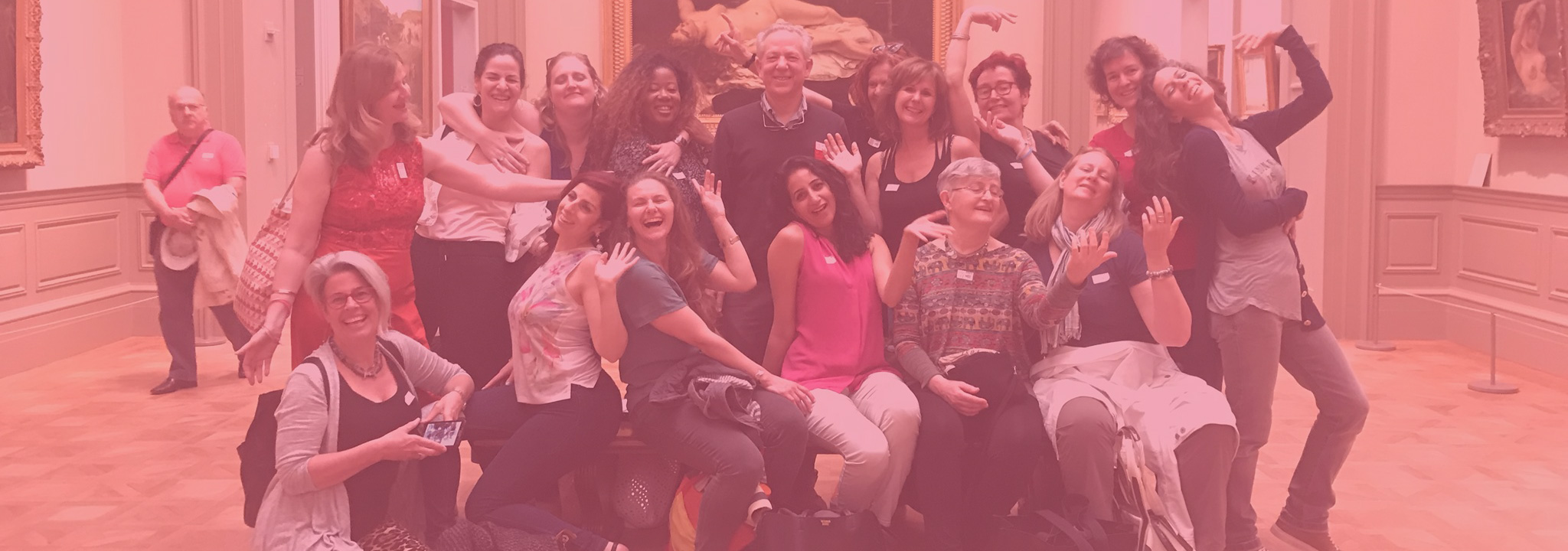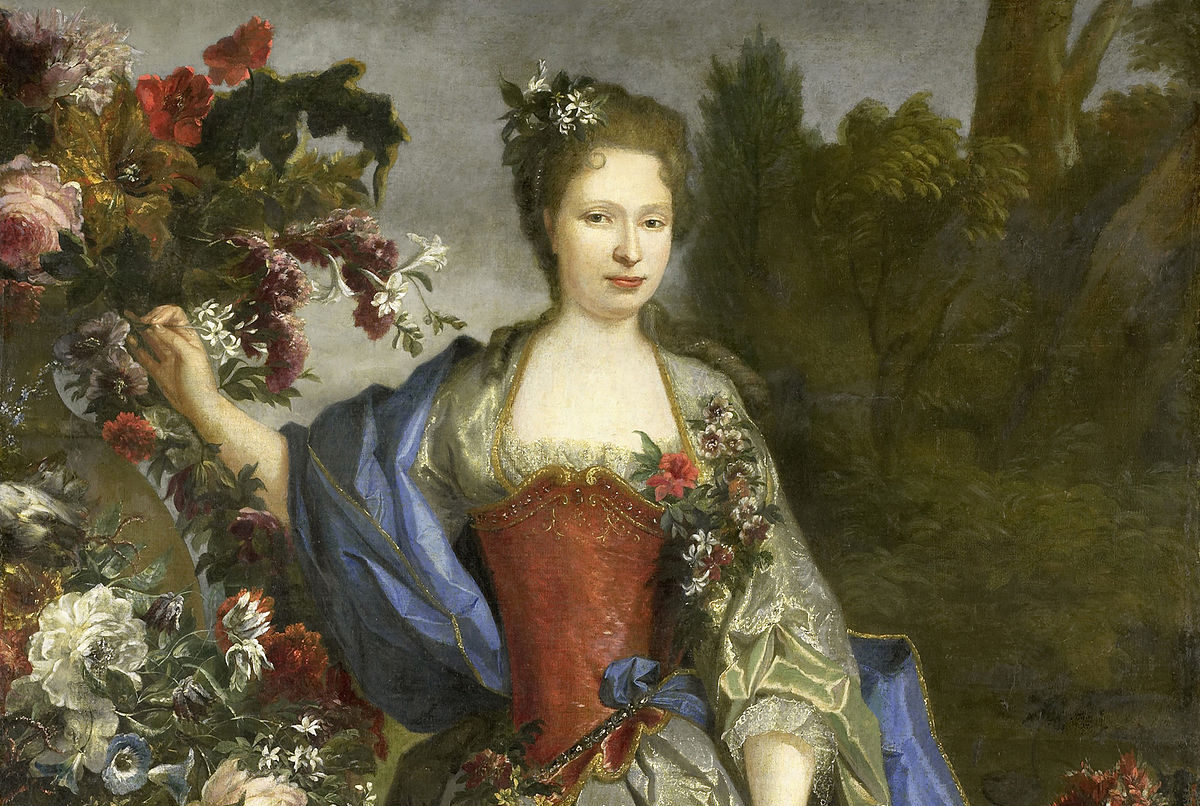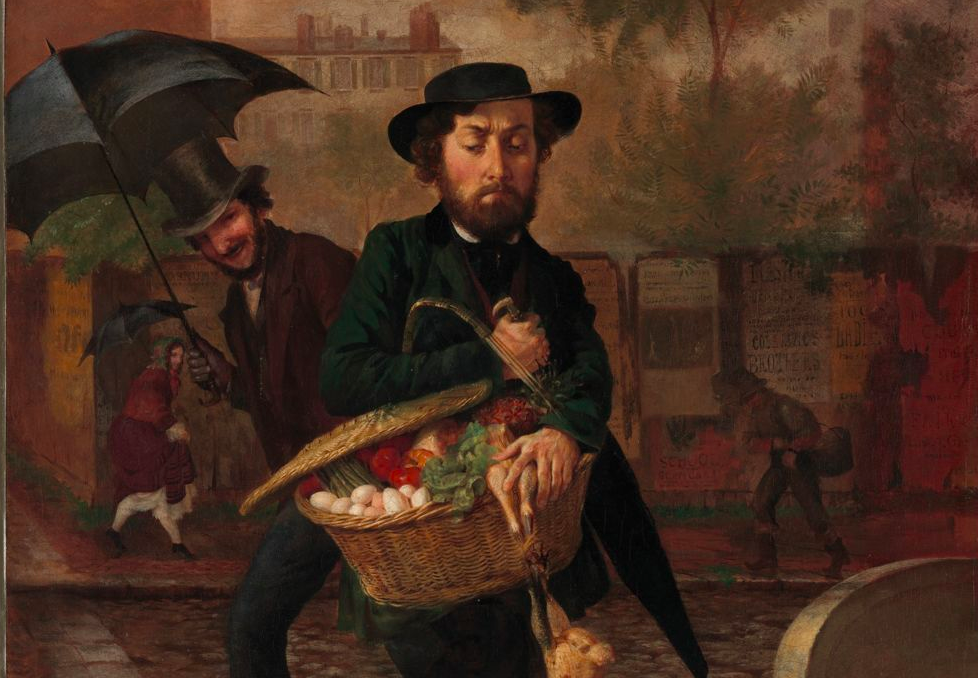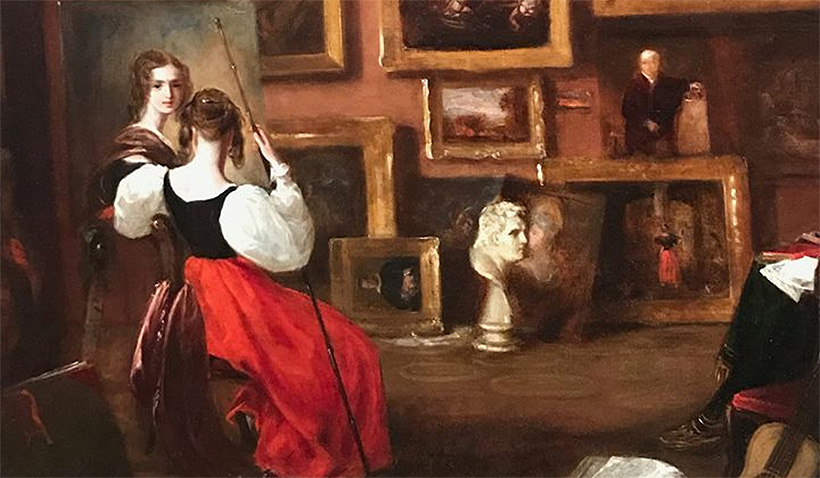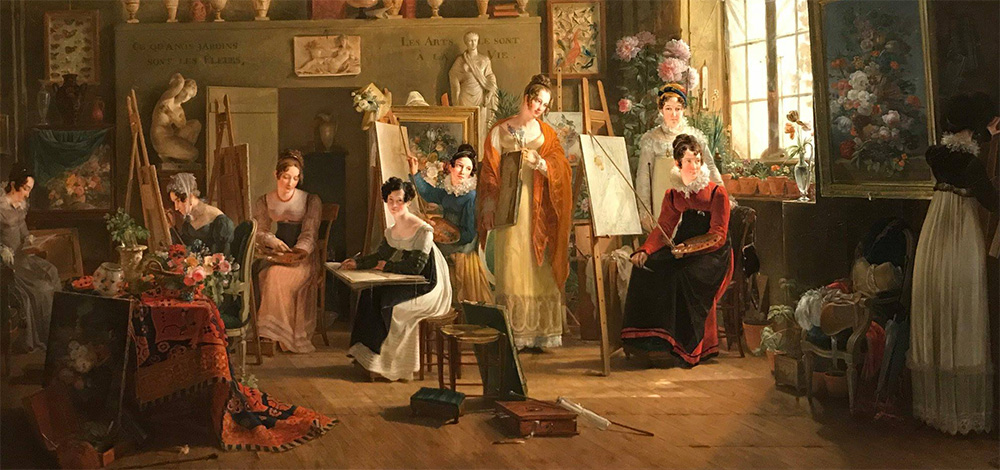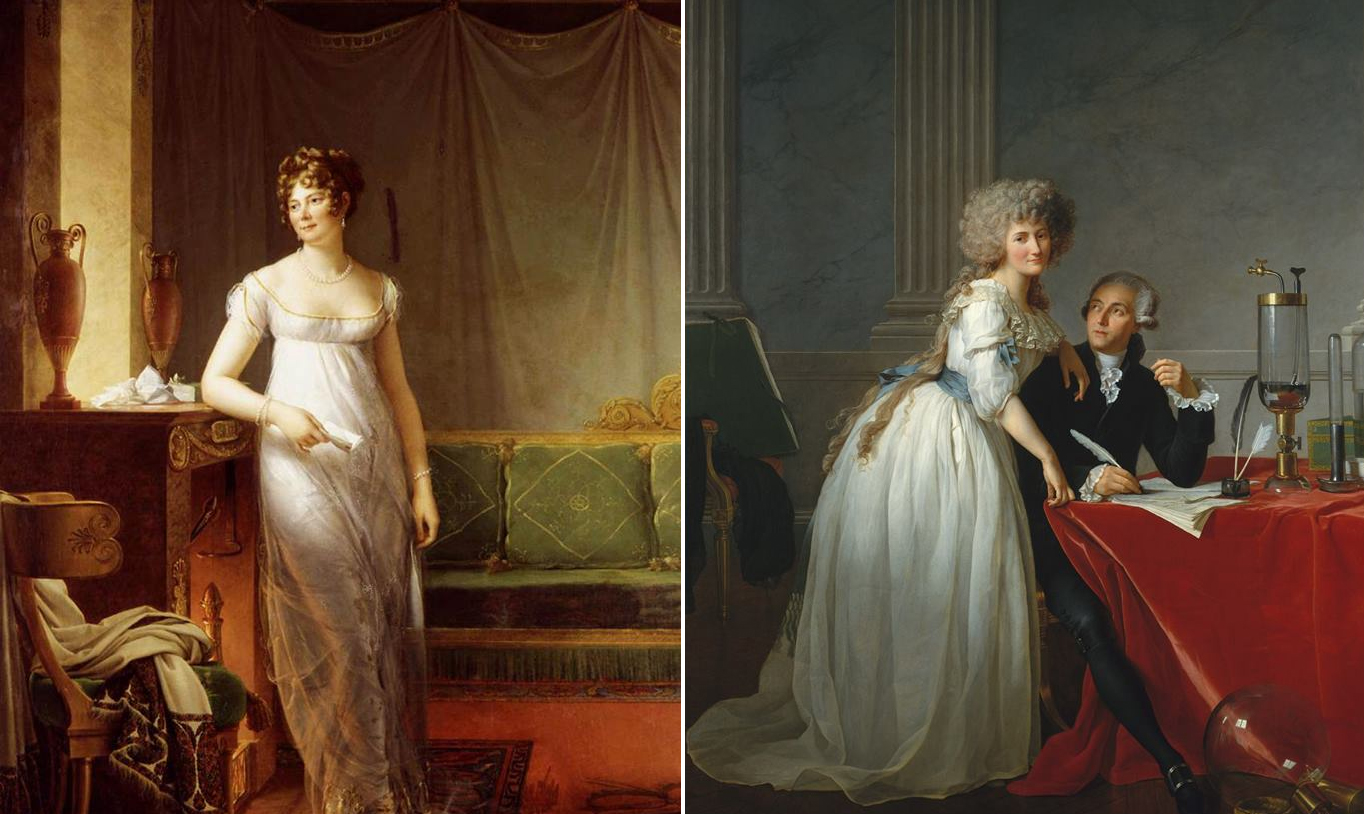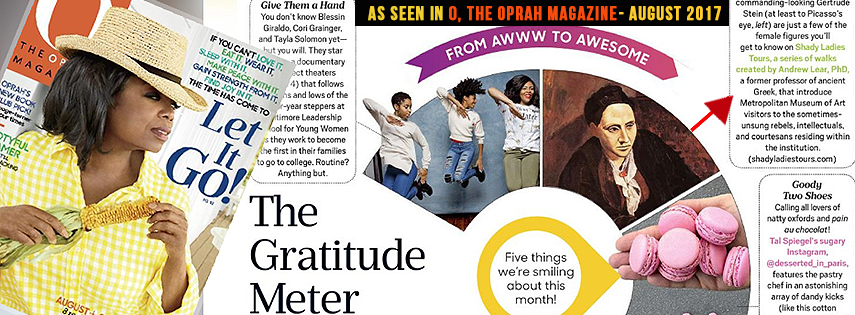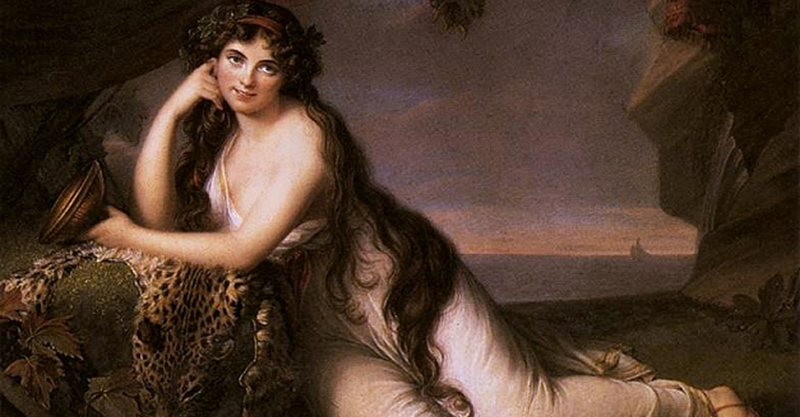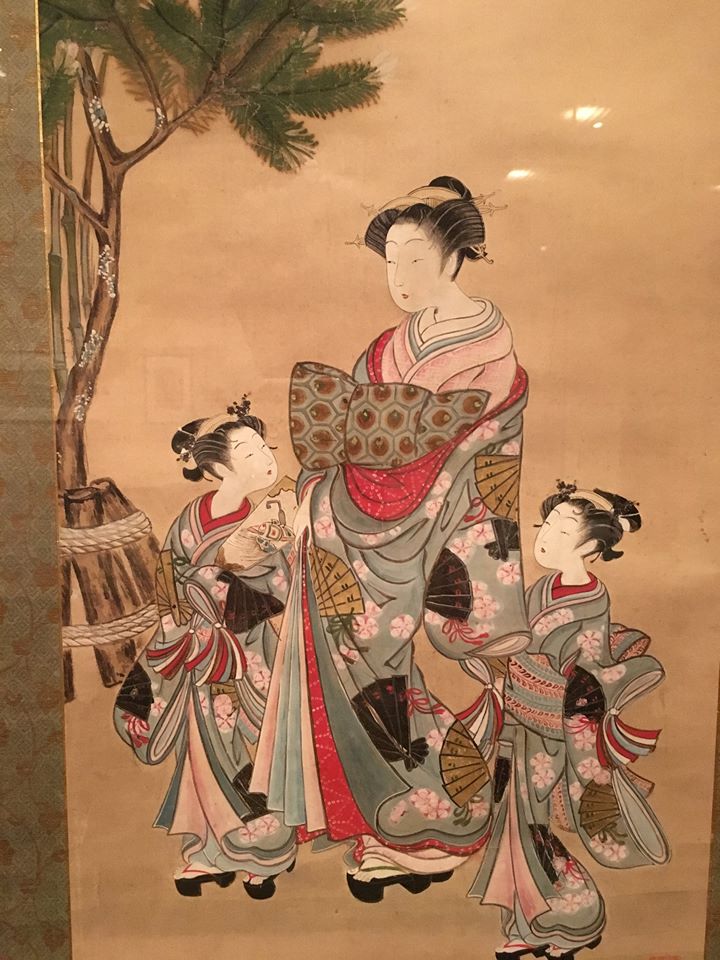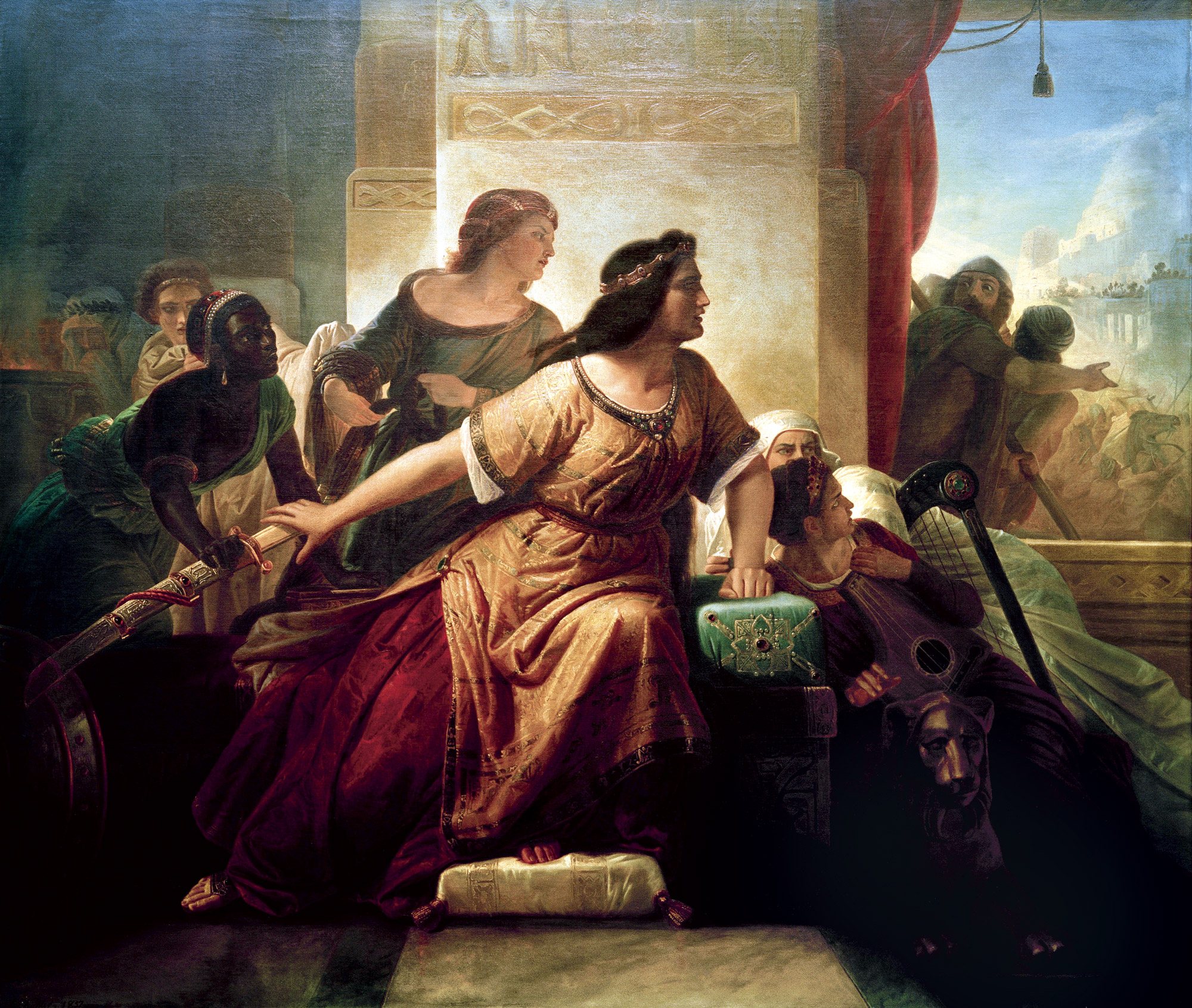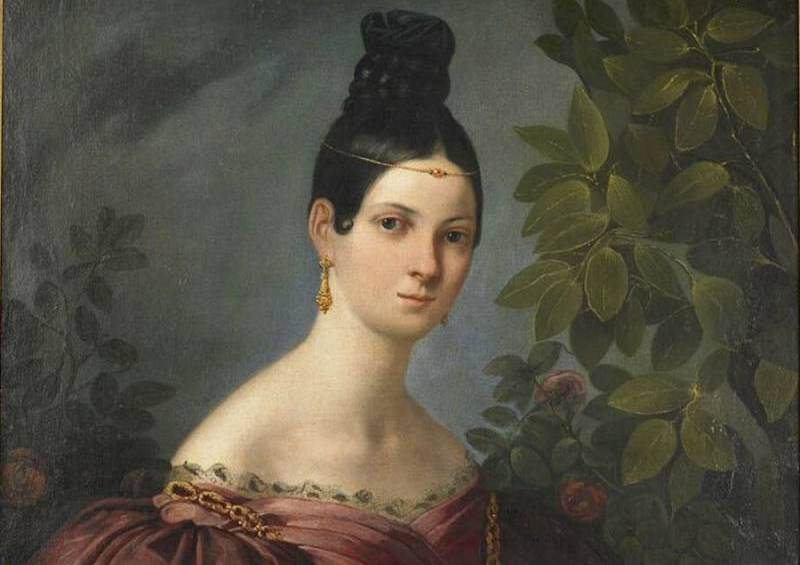Emma Hamilton The way from social obscurity to social stardom has traditionally been even narrower than the strait gate and narrow way to salvation. However, iconic looks, talent, intelligence, and a heaping helping of golden luck have been known to buy one’s way out and up. Emma Hamilton was born in 1765, among the working poor. Ordinarily, the nearest such a girl would have come to the aristocracy would have been cleaning up after them. She was working as a servant in London at twelve; she moved on to a brothel, then an establishment known as the Temple of Health and Hymen. Her first protector was one Sir Harry Featherstonebaugh. Supposedly she helped entertain his companions by dancing naked on his table. She attracted the notice of the Hon. Charles Greville, nephew of Sir William Hamilton. Charmed, Greville commissioned George Romney to paint portraits of her and make the public aware of the iconic face. Romney became quite obsessed with her and produced numerous portraits that convey both the heat of his interest and his subject’s charisma. At nineteen she was also painted by Sir Joshua Reynolds in a characteristic pose: a mischievous, meditative look over her shoulder, right hand delicately fingering her cheek.



